South Africa - Kruger
- Mike Timmons
- Aug 30
- 34 min read
Updated: Oct 1
8/31/2025 - 9/7/2025
If you have been following along, this is the third and final post for my South Africa trip. I have done a lot and seen a lot, but, in many ways, this trip is just getting started. Carmen and I are getting ready to head to Kruger National Park. We have dreamed of this trip for quite some time. I am not sure how it did not get prioritized sooner. In a lot of ways, we took it at the perfect time. In other ways, it was a bit late.
Carmen and I arrived in South Africa back on 8/23. Since that time, we have spent a day birding the Guateng region, and then we both spent time on separate trips to pursue individual interests. I, of course, went birding. Robert (from R & R Safaris) and I have returned to Johannesburg and met up with Carmen, who had just finished her cultural tour. This morning, we will catch a flight down to Skakuza and then start a 5-day safari with Robert. At the end of that time, we are going to pick up a rental car and spend 3 days on our own. That will be a bit of an experience. From there, we will start the long process of getting home.
So, a few disclaimers. One, I am a barely competent bird photographer. Shooting mammals is a whole different beast. Two, while on safari, we are in the truck. Meaning: there is no getting lower for shots, no getting out of the truck, no getting a better light angle, etc. Three, this is the bushveld. It is a lot of tall grasses and twiggy bushes. Things get in the way, and I did not want to hassle Robert about bumping the truck back or forth a few inches for a clearer shot. So, yes, many of the shots could have used a better light angle, been at a better height, and/or had less stuff in the way. As Robert explained, there is an Afrikaans saying (I think this is right), "Jy kry wat jy kry, en daarvoor is jy bly," which basically translates as, "you get what you get and you don't complain." Not that Robert was not infinitely patient with all our requests. The phrase came up in an unrelated conversation, but it seems fitting for shooting here. It is also a fitting mantra for vacations in general. Sometimes you just go with the flow.
One other thing. I am shooting with a lens that brought a lot of flexibility but alternated between "not enough lens for that small bird in the distance" and "too much lens for the elephant/giraffe/big thing nearby". The lens is a Canon 200 - 400 mm with a built in 1.4 converter. I can shoot between 200 mm and 560 mm without taking anything apart. It is the end of winter here. Things have been dry. It is dusty. Opening a camera body is a bad idea. Having said that, a 70 - 200 mm would have gone a long way out here.
Finally, this is a very long post. Feel free to skim the pics. Above all, please enjoy what I have to share. That is the point.
Now, on with the show! I am going to cover the time here day-by-day, but a lot of it is going to be a quick summary of what we did with a large set of photos afterwards. I will highlight some of the special moments. We saw a lot and shot a lot. We added 116 species of birds to the trip list, here. We also had around 32 species of mammals and reptiles. Robert did an excellent job of balancing the birding and mammal viewing; so, I have a lot to share. Most birds are labelled according to their Clement's name. South Africa uses the IOC names. I have included those in parens for most species, when they are different.
As I keep mentioning them, maybe a quick introduction - Carmen and Robert. I do not have a better shot of Robert. Carmen usually gets group shots of everyone. However, this is how I saw Robert for most of this part of the trip; mirror pointed at me and talking to his reflection. It is probably my fault. The day we met, I was wearing a shirt that said, "In my defense, I was left unsupervised", and he probably felt it was better to keep a constant eye on me.
Day 1 -
Our first day was fairly straightforward. We got into Skakuza and picked up the truck. From there, we had a bit of a drive to get down to Berg-en-Dal Camp, which I think translates as "mountain and valley". We started with lunch at the Skakuza Camp. While we are discussing meanings, Skakuza translates as "he who sweeps clean" and was the nickname of the first warden of Kruger, James Stevenson-Hamilton. The nickname is basically a reference to his efforts to clear the park of people and eliminate poaching. We have until 6 PM to get to the gates of Berg-en-Dal. This time of year, the gates open at 6 AM and close at 6 PM. You cannot leave before and there are fines/penalties for getting back late. Coincidentally, this corresponds with sunrise and sunset this time of year. We will use the whole day and pull into camp just a few minutes before 6 PM.
Even lunch can be exciting. We chose a table outside next to a large Sycamore Fig tree. While waiting for our meal, a Common Scimitarbill flew in and looked for its lunch. This was also out best place for finding Greater Blue-eared Starling. It looks a lot like Cape Starling with different facial marking and more prominent dots on the wings.
Robert also introduced us to one of the most beautiful flowers I have ever seen, here. The Impala Lily is as toxic as it is beautiful. I would photograph it often throughout the trip.

As we are just starting the trip, we are also just starting our "Big 5" checklist. The "Big 5" is a list of animals in Africa that are considered the most dangerous animals to hunt. They are also some of the most popular animals: elephant, lion, leopard, rhino, and buffalo. In Kruger, there is also the concept of the "Magnificent 7", which adds cheetah and wild dog to the list. We are really hoping for a M7, kind of trip. Both the rhino and wild dog are high on our list of mammals to see. The Berg-en-Dal area is good for seeing the Big 5. The habitat is a bit different than the rest of the park. As we moved south, we picked up things like Greater Kudu (an impressively large antelope with massive curling horns) and Klipspringer (a small antelope that sticks to rocky prominences). Impala are everywhere; as are African Elephant. I jokingly made up a list I called the Ugly 1, whose sole member is the Warthog. Carmen thinks they are cute and would yell out and tell them they were beautiful when I would mention it. As for birds, we added a number of birds. The starling and scimitarbill from lunch were new. We also added common birds like the Red-billed Oxpecker (which I would shoot every chance I got), Purple Roller (stubbornly uncooperative most of the time), Bataleur (a beautiful eagle species), Magpie Shrike and Fork-tailed Drongo (both of which I would also shoot every chance I got), and both the Southern Yellow-billed and Southern Red-billed Hornbill. There were many more, but these are a few of the standout birds.
We had a few bits of luck throughout the day. Carmen is eager to see big cats, and Robert got a report of an African Leopard with a kill not too far away. We took a quick detour on our drive and pulled up to the spot. There was a single car there, and the occupants said there was a leopard there, but that it had disappeared. Robert pulled forward a bit and then stopped. Sandwiched between two rocks was the leopard with its kill. It was just out of sight for the car. The leopard started feeding while we watched. I left out the more gory pics. The lighting was crazily bad, but it was a good way to start the trip. Day 1, and we already have a leopard.
As the day wound down, we came across a Lilac-breasted Roller. When Robert asked about targets for Kruger, I said I really did not have any. I explained that it was my first time to the park and that I had birded parts of Africa at various times. I just wanted to see what the park had to offer. Oh, and I wanted lots of shots of Lilac-breasted Roller. We found this bird perched low and in perfect light. More importantly, it stayed. So many times though the trip, the bird would fly or be perched high in a tree. It was good to get nice shots of this bird on the first day, but it just made me want more.
As we were approaching camp a pair of Spotted Hyena were walking the edge of the road. I had thought we would see more of this species throughout the trip. Unfortunately, this was one of only a few sightings.

The final highlight of the day was our best. It is one of the reasons why we booked this trip. It is also why I say that we booked this trip too late. On a distant hillside, grazing in a grassy opening, we had our fist White Rhinoceros of this trip. It was beautiful, impressive, and sad. We knew it would be like this coming in, but it is still shocking to see that the horns have been removed from the animal. Poaching is still a very serious issue. Nationwide, South Africa saw 103 rhinos poached between January and March of 2025, alone; 65 of those were lost from national parks. In an effort to deter poaching, the horns have been removed from the animals. Unfortunately many are still poached for the stub that remains. Today, in wild places like the park, we can only imagine what the rhino would have looked like with a full horn. Some highly protected reserves still have rhinos with horns, but the park is too vast to totally protect, and dehorning is their best deterrent for now. Our guide offered some hope. They are piloting a program that basically makes the horns radioactive. The horn is injected with a radioactive isotope that, supposedly, is harmless to the rhino. The radiation is easy to detect and should make getting the horn out of the country tougher. All we can do is hope. Or for people to wise-up and realize that the horn has no medical benefits.
All that aside, it was great to see the rhino. It was high on our list of things we wanted to see, and it was good to take the pressure off on our first day.


Day 2 -
So, the general plan for the day is to get out in the morning and see what we can until midday. We would then break for the middle of the day and then head back out once it had cooled a bit. That pretty much fell apart our first full day. I do not think Robert knew what he was getting into. This day would more-or-less be the pattern for following days. We were out the gate at 6 AM and rode up to Afsaal. This is a picnic site that features a shop and restrooms, and they serve food. The menu is a bit limited but is not bad. We would then bird our way back to camp.
The morning mammals started off very well but without photos. We found a White Rhinoceros just outside camp. It even still had a horn. It was too buried in the bush to get a photo, and it did not wander toward the road. We watched it move off into the bush and then drove on.
The morning was quite birdy, and I got to photograph a number of species I had wanted to see. Some well; others not so well. I started with a Southern Red-billed Hornbill. It was perched in nice light right next to the road.
Then we hit a flock of White-crested Helmetshrike. These birds always travel in groups. When excited, they emit a call that sounds like static electricity. A flock of them calling sounds absolutely crazy.

Then we hit a nice mixed flock. Robert calls them a "bird party", and I love this phrase. I did not capture everything in the group. We had stopped to look at a flock of White-winged Widowbirds. Then we noticed there were a number of species in the group. I started pishing ("spishing", according to Robert) and birds came in to see what was going on. Chinspot Batis, Green-winged Pytilia, Golden-breasted Bunting, and White-breasted Sunbird were among the highlights.
Otherwise, it was a morning of working on my Magpie Shrike photos. In addition to some of the more common birds, we had good looks at Burchell's Starling, African Green Pigeon, Rattling Cisticola, and Red-billed Buffalo-Weaver this morning. We also finally managed to see a White-browed Scrub-Robin after hearing several. As for mammals, we had a good morning for them, too; just nothing too unusual. I discovered that I really love the looks of zebra.

The zebra are slightly different here. While they are still Plains Zebra, they do have an extra stripe on their hind quarters. Instead of the normal black/white pattern, they have a gray stripe they alternate with.

We also had some fun watching the Impala at a watering hole. The park features a number of man-made watering holes that are frequented by the animals. The Red-billed Oxpecker hang out here and treat the place as a wander-thru buffet. As new animals arrived, they would attract some oxpeckers. At times, this got to be a bit too much for the animal.

We had one new mammal. Bushbuck actually hangs around the camp at night, but we got one in the daylight.

It was a good morning overall. At Afsaal, I worked on photos of the regulars while Robert and Carmen had breakfast.
We left breakfast and headed back to Berg-en-Dal. We stopped at a larger waterhole and spent quite a while here. There were a lot of Impala, but a herd of zebra came in. Just as they were cycling out, a herd of African Buffalo came in.
The funny thing was that the buffalo would get surrounded by turtles when they got into the water. There was a man-made waterhole and a natural one here. The turtles, Marsh Terrapin, were in the natural one. When a buffalo got in, the turtles would swim around it. You could see their little heads poking up out of the water.
We hung around for a while but nothing else was coming in while the buffalo were there. A Mariqua Sunbird briefly flew into a nearby bush.
The buffalo meant we had 4 of our Big 5. We were only missing lions. Each camp/rest area posts a board with sightings from the previous day and the current day. Rhino are no longer marked, but the most commonly sought animals are on there (basically the "Magnificent 7" minus the poor buffalo). Each animal gets a colored marker, and people place the marker where they have spotted the animals. Lions had been spotted back near camp.
We did not have much on the drive back to camp. It was hot. Purple Roller allowed for a brief shot. We also had White-fronted Bee-eater. Green Wood Hoopoe flew about in noisy flocks but refused to get anywhere close for a shot. Brubru continued to taunt me. I have heard this bird often but not seen one yet. We did run across a group of Groundscraper Thrush mixed with some African Hoopoe. The hoopoe were nice, because Carmen had bought me a beaded one as a gift. It would have been funny to have the gift without having actually seen one this trip. Yellow-throated Longclaw, Scarlet-chested Sunbird, Brown Snake-Eagle, Dark Chanting-Goshawk, and Yellow-breasted Apalis were among the new birds for the trip. There was also a few of what I had already come to think of as the "common" birds of Kruger. We got back to our room, dodging the Vervet hanging around outside, for a quick break. As Robert explained, the monkeys are cute until you have to live with them. When we walked up to meet Robert at the truck, the monkeys were in the truck going through the things left in it. The monkey-proof cooler did not live up to expectations.
Prior to getting to camp, we diverted to pass by the waterhole where the lions had been seen. It was serendipitous. Just as we arrived, a lioness came in for a drink. She grabbed a quick drink and then wandered toward the road. Instead of crossing immediately, she laid down and stared at us a bit. She finally got up and moved off into the bush. Nearby was a carcass of the buffalo the pride had killed a few days ago. There was nothing left of it.
Like that, we had our Big 5. I joked with Carmen that we could go home. She wanted more cats. The afternoon would be spent at a bridge and then re-checking the waterhole for lions.
Leaving to head to the bridge, we had a bit of a surprise. We had a bird party just outside the gate, and Robert noticed the starlings were raising quite a fuss. We pulled up a bit further and found the cause. A Gabar Goshawk had captured a bird. I saw the blue and wrote it off as a starling; focusing instead on photos. Robert looked closer and noticed it was a Brown-hooded Kingfisher. Now I had an issue. The poor kingfisher was still alive. It was periodically struggling and squawking as the goshawk pulled feathers. This was, technically, my lifer Brown-hooded Kingfisher. I could not bring myself to count it. Luckily, we saw some later, and it was a non-issue. Robert did say that the kingfisher does eat other birds (this is not a fish-eating bird; it preys on insects, lizards, and, yes, other birds) and was maybe getting a bit of karma.

The afternoon was really nice. There is a bridge over the Crocodile River that you can park on and get out of your vehicle. You need to stay close to your car, because - leopards, but the bridge is long enough and high enough that there is little risk.
Naturally, there were quite a few water birds. The highlight here was a pair of African Skimmer. Goliath and Striated Heron, also Gray Heron, Great and Little Egret, Lesser Masked-Weaver, Black Crake, African Jacana, Little Stint, Wood Sandpiper, Black-winged Stilt, Yellow-billed Stork, Wire-tailed and Lesser Striped Swallow, and a flyby group of Trumpeter Hornbills topped the list. I forgot to mention Pied and Giant Kingfisher, as well. We did see crocodile; so, the river seems aptly named. We also saw a herd of elephants. A few came in and fed below us. It was an interesting way to watch them. There is not much in the way of photos. Shooting down on birds does not make for the most interesting pics.

We finished the afternoon with a short drive before hitting the gate at 6 PM. We tried heading back out to the waterhole with the lioness, but it was chaos. Everyone was trying to get out there. We eventually got there but the lions had already left. We had a pair of Whalberg's Eagles perched in a tree along the way, and ended the drive with pics of elephants walking down the road and a few more shots of the Ugly 1.
That evening, we did a bit of night birding around the camp. It is mostly safe, but you need to stick to the more populated areas; just in case a leopard has snuck in. It rarely happens. The camp is surrounded by a tall, high-power electrical fence. I was not willing to test how strong it was. Strong enough to deter elephants, of which there were always a few on the other side. In the camp, Fiery-necked and Freckled Nightjar could be heard. The cry of the Water Thick-Knee was often heard. We were looking for owls, though. The night was unusually quite, and we would have to try again.
Day 3 -
Out at 6 AM, again. We are heading to "the" waterhole. It is really the side-mission, though. The day before, I had overheard someone on the bridge talking about pangolin. Robert talked to the guy, and he said he had seen one a couple of times over the past couple weeks on the road leading away from the waterhole. We are going to drive the road and take a look. I would love to tell you we saw one, but it was not meant to be.
No joy on the lions, either. This would be the last chance we had to visit this waterhole. For some reason, the park closed the road that afternoon, and it remained closed the rest of our time here. We ran into a small bird party on the road while searching for pangolin. I was happy to see a Brown-hooded Kingfisher. Crested Francolin dashed through the grasses along the road. We had the usual birds, like Rattling Cisticola, White-winged Widowbird, and Southern Cordonblue. Additionally, we had both Southern Black-Flycatcher and Fork-tailed Drongo. I am not sure I would have noticed the difference at a casual glance.
There were a couple of highlights from the flock. First, I got to add to my Lilac-breasted Roller collection.

Second, Robert heard a Pearl-spotted Owlet calling. It sounds a bit like a pygmy-owl. Robert breaks into an imitation of its call, and the bird flies in across the road. It perched up in a tree against the light. Remarkably, it stayed there while we repositioned the truck for better light. Yes, I took photos before we moved, just in case.

We moved on down the road and got back on the main road. Along the main road, we had good looks at Tawny Eagle and a young Bataleur in bad light. We were not having much luck with mammals. There was a family of Dwarf Mongoose, but they were so busy running through the underbrush that photos were basically impossible. We pulled onto a bridge to look for mammals at the waterholes. While sitting there, Robert commented that he heard a Yellow-billed Oxpecker. It is an uncommon bird for the park. Somewhat distantly, on the back of an Impala, there was a single Yellow-billed Oxpecker.

The real fun of the morning all happened because we were chasing a bird. While on the bridge, we heard a Verreaux's Eagle-Owl call. Robert doubled-back and picked up a dirt road that would take us along the river. We did not locate the owl, but we did find a beautiful Crested Barbet checking out a hole in a termite mound. We also had a few African Green Pigeon and a Spotted Flycatcher nearby. While shooting the barbet, a car stopped by and informed us there was a leopard sleeping in a tree a few miles up the road. We headed off and found a large group of cars. Cars were parked haphazardly and all of them seemed to be looking at different trees. We could not figure out where the leopard was until we realized were were practically driving under it. We backed up and found a spot to park. The cat was sleeping, but we waited a while. Before long, it woke up and looked around a bit before laying back down.

Heading to the leopard, we had some more Greater Kudu. We left the leopard spot and started to head to Afsaal. We passed through a riverbed where a large herd of elephants was passing through. There must have been at least 20 of them. A Hamerkop was perched along the road, and a pair of Red-billed Oxpecker were riding on the back of the Ugly 1. I guess they are not too picky. At Afsaal, I joined Robert and Carmen for breakfast. I had been admonished to be sure to try a "bush toastie" while there. It is a toasted cheese sandwich with back bacon and egg. Plain, simple, delicious. A Cardinal Woodpecker was the star of the lunch show. Our morning looked like this.
We never made it back to camp for the midday break. Robert kept asking how we were doing, and we were both fine. The afternoon was not overly active. We had a couple of cool lizards: a male Rainbow Skink (somehow I got distracted and forgot to shoot the female) and Giant Plated Lizard. I got my best, which is not saying much, shot of a Steenbok. This is basically the chihuahua of the bush - it is a very tiny antelope. More Greater Kudu. We had brief looks at a Gray Duiker (another antelope species) as it ran for cover. There was a dammed area that we drove through, and we had a few mammals there. It provided our best looks at Waterbuck. The subspecies here has a white ring on its rump. We had our only Malachite Kingfisher of the trip at the dam. This kingfisher does feed on fish. Black Crake also wandered by for some shots. We drove and visited a blind at a waterhole. There was not much going on. Three-banded Plover, Egyptian Goose, and Wattled Lapwing were the only birds; no mammals. Other new birds this day included a young White-headed Vulture, Acacia Pied Barbet, Sabota Lark, Burchell's Coucal, and a White-throated Robin-Chat. We finished out the day with a pair of Water Thick-knee nesting at the side of the road. The birds were patient enough to allow us to drive past, backup, adjust for light, and then shoot.
So, highlights from the afternoon. I got two. We finally (finally!) saw a Brubru. It is not much of a shot, but it deserves a call-out. We spent a lot of this trip hearing this bird. A pair finally perched up in the top of a tree, and I got my lifer.

After we left the dam, we drove to check on the leopard, but it had moved on. Robert talked to a couple of drivers there and then we moved on. Robert was telling us (as the conversation was in Afrikaans) that they had a rhino close to camp this morning and that it was right against the road. We had rhino earlier in the day. They were quite distant, but they had a young one with them, and that was really nice to see. Robert's point was that, sometimes, you can have quite a close encounter. We came around a bend in the road, and a van was parked at the edge of the road. That always gets attention. I looked at the driver, and he was pointing to our right. Just behind a bush off the edge of the road was a White Rhino. We backed up a little and parked. For some reason, the van left. It was just us and the rhino. Then it walked out from behind the bush.
So, rhinos have what is termed a "midden". This is a scraped out area where they go to the bathroom. Based on some quick googling, the midden is a communal restroom shared by rhinos in the area. The rhino will sniff through the midden to determine what other rhinos have been in the area. They they will use it themselves; finishing by scratching through it with their hind feet. We got the full experience; although I am not sharing the more... detailed?... images.
Regardless, it was an amazing experience, and I was in awe. We were almost too close, but I could just fit the rhino in frame. Once done, he walked right at us, and Robert had to back the truck up. Very incredible. And, still, very sad. It is hard to imagine what this guy would have looked like with a full horn. I hope for a world in the near future where the poaching of rhinos is not a thing. Look at this magnificent guy!
We finished out the night with a walk around camp. We found both the African Barred Owlet and the African Scops-Owl. I guess the key was to leave the camera behind.
Day 4 -
It was a bit of an abbreviated day, and a bit of a long day. This morning was the morning I had set aside for birding the camp. We had a few targets that could best be found within the camp. We started a walk at 6:00 AM. The African Barred Owlet was still calling, and we tracked it down. I was not happy with my photos and made plans with Robert to try again the next morning. Grey-headed and Sulphur-breasted (Orange-breasted) Bushshrike, Terrestrial Brownbul, Natal Spurfowl, Tawny-flanked Prinia, African Black-headed Oriole, Purple-banded Sunbird, and (thankfully) a pair of Purple-crested Turaco were the highlights. We had quick views of an African Paradise-Flycatcher as we drove out. We missed the Retz's Helmetshrike. Robert said that they have been heavily parasitized by cuckoos over the years and numbers have dropped. I guess I always need a reason to return.
We knew it was going to be hot this day, but we were not quite prepared for it. The morning was cool and sunny. We continued our rhino streak with another sighting this morning. We have seen at least one every day in the park. We had a few new birds right outside the gate. Pied Crow was a bit of a surprise. They are not common in the park. Lesser Striped Swallow were active, and I briefly had a pair perched. Brown-headed Parrot were feeding in some nearby trees, and Striped Kingfisher was perched on the line. Sadly, this was our only one of the trip.
We drove the area but did not have much new. The day was quite calm. It was like the animals knew it was going to be hot and had already settled in for the day. The only other bird of note was a Bearded Woodpecker that was doing a territorial drum on a dead tree. The tree rang with a perfect woodblock sound as he drummed on it. Mammals included the usual suspects.
The day wound around to midday and the temps rocketed. By the time we got back to camp, it was 107 degrees F. Riding in the open truck was like facing down a furnace. It was not a lot of fun.
Highlights for the day are just lumped in with the other pics. The morning walk and finding the owlet was really nice. I just wish I had the camera setup a bit better. The other highlight was a large bull elephant. This guy would rest his trunk on his tusk. The photo is also a good example of how elephants tend to be either right-tusked or left-tusked. Like people, they have a preferred side they coordinate with. This bull is right-tusked, as evidenced by the extensive wear on that tusk versus the other one.
We had lunch at the camp and then huddled in the rooms until around 4:30 PM. We caught up on journaling and got things straightened away for repacking.
Tonight is our sunset drive. We met up and loaded into the park's truck. All in all, it was an interesting experience. I suppose everyone's experience varies wildly. But ours was not that great. The guide was trying to get the people to interact, but it all fell a bit flat. Spotlights were handed out at the front and rear of the vehicle, but no real direction was given. From there, it was a race through the bush. If the guide spotted something, we would stop and talk about it a bit. Other cries to stop were about 50/50 on whether we stopped or not. My general impression was that this guide had just been doing this drive too long and was not really into it any longer.
We had a number of animals out. We saw a few rhino. We caught an eyeshine from an animal in a tree that turned out to be a Large-spotted Genet; supposedly the black tip to the tail gives the ID. Marabou Stork brought the story about the Ugly 5. Turns out there is an official list that is not just the Warthog 5 times. Warthog (at the top), Marabou Stork, "the vulture" (entirely generic and unfair), hyena, and wildebeest. I feel wildebeest is a bit unfair too. Does it look strange? Yes. Ugly? Not really. I am sticking with my Ugly 1 list. We raced through the waning sunlight and into the dark. Spotlights wagged uselessly through the night air, and we finished last in a race against ourselves. We grabbed dinner and headed back to the room to repack.

Tomorrow starts the final chapter in our trip. We will head back up to Skukuza to pick up a rental car and say goodbye to Robert. From there, we will be on our own for a few days. We just have to get Carmen to finish repacking, first.
Day 5 -
This morning started with round 2 of the African Barred Owlet hunt. We were far more successful.

As we are leaving, I guess I might want to share a couple pics of where we are staying. The place was nice overall. Nothing much to complain about. We did have a mouse that ate some of Carmen's Doritos, but it stayed out of my ginger cookies; so it was not that big of a problem.
It was a morning of highlights. The temperature had dropped, and everything was out. I got more zebra shots. There was a cute baby elephant, and nothing expresses more joy than a baby elephant. It was a great experience to watch this little guy run around and just touch everything around him. There were more Fork-tailed Drongo pics and, of course, Lilac-breasted Roller shots. We added a new bird species - Pale Flycatcher; so, we did not zero the day. Brown Snake-Eagle perched for a shot, and I got more shots of the regulars at Afsaal. I also had a parting bush toastie. Mrs. Klipspringer was still on her rock when we went by.
The highlights: well, I finally got the Red-billed Oxpecker shot I had been wanting. Well, one of them. This was a picture of one perched on the mane of a giraffe. The other is of one riding between the horns of an impala. Anyway, here is what I got.
We did have one more leopard encounter on the way out. The leopard was sleeping in a tree with a pair of Impala carcasses stuffed in it. What made this a bit different was the genet stuck in top of the same tree. It was standing in the very top, frozen and staring at the leopard, who did not appear to have noticed it. Secondly, a Hooded Vulture flew in to check the carcasses out. It was not brave enough to fly in, but it did perch in a tree and stare for a while.
We got into Skakuza and picked up the rental car without issue. Then, we said goodbye to Robert. We had a great trip with R & R Safaris. I would not hesitate to use them again. Robert was a great guy and infinitely patient and knowledgeable about the park and its wildlife. He is also a great birder. He does photograph jumping spiders for a hobby, but we cannot all be perfect. I kid, of course. That sounds really cool, too.
We loaded up the rental and took off down the wrong side of the road. I mean the left. It was a bit odd. Our mission for the day was to get out the Crocodile Bridge Gate and down to Marloth Park before sunset, by 5 PM, ideally. We had a lot to figure out.
We had rented an Air BnB in Marloth Park for 3 nights. Marloth Park is close to Kruger and is a bit like a gated city. There is security to enter the place. Once in, the place is quite large. There are restaurants and stores. There are tons of houses. We first had to locate the security company to get the keys for our place. That took a little work. The house was fantastic. The best part was that the place is essentially a part of the park. In fact, you are not allowed to walk the roads after dark; especially at the time we were there. A lioness was being seen in the area. With Kruger nearby, it was not uncommon to see wildlife around the house. You could buy food for the wildlife and put it out. Even without food, we had zebra and kudu come to the backyard.
Our evening's highlight was actually in the backyard. You might be forgiven for thinking it was a small bird condo mounted to the top of a pole. It is actually a home for Lesser Bushbaby! We got to the house in just in time to have them poking their heads out!!

I am so far ahead of myself, though. A few more words about the place and then back on track. We really did not take full advantage of our time here. There is a small reserve inside the community. There are street vendors selling handmade items. There is plenty of area to see and experience. We basically just used it as a place to eat and sleep. The rest of the day was spent in the park, and we would have done better to stay in the Crocodile Camp. Live and learn. We should have planned a day for just staying in Marloth Park.
We had a while to get to the house from Skakuza, but we had a lot of distractions along the way. We stayed fairly focused, though. Our biggest struggle was learning to share windows. Something that was not a concern from the open-top safari vehicle we were in before. We each had our own row. Now we were having to share a window. There was not much in the way of highlights. We had joked with Robert that all we were going to see on our own was elephants. We did manage to find baboons, which Carmen was excited about. The species here is Chackma Baboon. We also found some hippopotamus. Carmen was very happy about that too. Our first new bird on our own was Saddle-billed Stork. Such an amazing bird. We got out the gate at the planned hour and made it to Marloth Park without much issue. Evening one on our own was a decent success.
We ate dinner at a nearby restaurant. Meals seem to be an hour to two hour experience in South Africa. It is not really a bad thing. But when you are just wanting to eat and get to bed, it can seem a bit long. We worked on our appreciation for cricket while we waited. By the end of the meal, we had not made much progress.
Day 6 -
We were excited for our first full day. Except that I was tired and set my alarm for the time we wanted to be at the gate instead of the time I needed to get up. Carmen was on top of things and got me out of bed. We were only a little late. We are coming in via the Crocodile Bridge Gate. The habitat here is wildly different than Berg-en-Dal. There are more grasslands. The area right inside the gate is a red, rocky Mars-scape. Robert had shared some ideas on the most productive roads to follow. We really were nervous that we were not going to find much on our own. This first day did little to relieve that. We spent the whole day in the park. We drove the roads recommended to us. We had little to show for it. It should have been telling when the driver of another safari truck asked us if we had seen anything. Maybe it was just not that productive of a day. No new mammals for the day. That would not come until evening. We added African Openbill, Common Ostrich, and Woodland Kingfisher to the bird list. Robert had left us with slim pickings for new bird species.
By lunch, we had gotten to Lower Sabie Camp and settled in for a bite to eat. Carmen was feeling a bit dejected. We worked on our cricket appreciation some more. When that failed, we came up with a plan for the afternoon. That plan lasted right up to the point where we saw a safari truck pull a u-turn right in front of us. We followed.
We were led to a mother leopard and her cub. Here is where the benefits of the safari truck really became evident. We are sitting lower. Much lower, and we are having to shoot through the grasses instead of over them. Are we more eye-level? Sure, but we are also obstructed. It took a while to even get into a position where we could see the leopard; let alone shoot it. We finally got into position and spent a little bit of time enjoying the view. The cub walked around its mother and then laid down to nurse. Mom looked at us a bit and then went back to sleep.
We drove around a bit more, but this was going to be the mammal highlight of the day. We did get some good looks at wildebeest. These are Blue Wildebeest. On our first day, we had Black Wildebeest.
The bird highlight came as we where heading to the gate. We were on a narrow dirt road and came around a corner. Standing at the edge of the road was a Kori Bustard. These are large birds. They always look a bit self-posessed. I was so excited that I fumbled at the camera and the settings. It was too close, and I thought I had the zoom wound all the way out. I was twisting it the wrong way.... Luckily, the bird walked into a small clearing and gave me a second chance.
We were out the gate at 6:00 PM and got into Marloth Park for dinner. Carmen rode in the backseat all day and was not feeling good. She had taken Dramamine, and it had left her feeling drained. We sat down for a long dinner. Conversation dragged a little as she was just not that talkative. I had pulled out my phone and taken some snapshots of her and then checked messages.

I looked up from my phone and saw a large, cat-sized animal with big eyes crawling on the limb right behind her. It is practically on the back of her chair. I grasped for a word of warning, surprise, ... something. I got out the word, "Oh." Pronounced with a bit of mild surprise. Fortunately, she was not in any danger. It was the larger cousin to the Lesser Bushbabby we had at the house. The Thick-tailed Bushbabby is much larger but every bit as cute. The restaurant had laid out banana slices on the tops of the posts, and it was trying to get past Carmen to get to them. I did not get a shot. I was too busy protecting Carmen, or something.
Day 7 -
This is our last full day here. I told Carmen we were going to do better today. She was still a bit down about how things went yesterday. It was a minus that our only cat of the day was found by following another vehicle. Well, we changed that by finding things that had a pile of vehicles in front of them already.
It was a full day in the park again. We did drive some new areas, but they were not overly productive. Most of what we found, we found in places we had visited yesterday. These would mostly be the roads to the east of the H4-2.
We got through the gate at 6:15 AM and immediately had some Kori Bustard walking the red, rocky area near the gate. Coupled with the blood-red sunrise (the dust in the air makes for spectacular sunrises and sunsets), this make for some eerie-looking shots. As we were shooting the bustard, or attempting to in the low light, we noticed a pack of Banded Mongoose scurrying about in the background.
And, like that, we already had our first new mammal of the trip. The day only got better from here. We headed out on the road we started with yesterday and immediately stumbled upon three Cheetah lazily laying in the open. The wind was fierce today. The blowing dirt was a problem. We did have a Cheetah get up, but it only turned its back on us and the wind. We spent a while here. Carmen was feeling much better about the day already.
We battled the wind, filled the car with dust, and worked our way to Lower Sabie. Along the way we had more zebra, wildebeest, Kori Bustard, and Common Ostrich. I got to work on my Magpie Shrike and Lilac-breasted Roller photo collection. I also got to add African Gray Hornbill and Long-billed Crombec photos for the trip. We found some somewhat cooperative Dwarf Mongoose and what I believe is a Rock Monitor lizard. It was quite large. An African Buffalo provided a bit of a tense roadblock at one point, and we had a pair of African Openbill battle it out in front of us. All in all, by the time we got to Lower Sabie, we had had a pretty good day.
We skipped cricket for lunch and grabbed meals to go. We were on a roll. Robert had sent an alert about a nesting Secretarybird a bit north of Lower Sabie, and we decided to make a run. The report was a couple days old, but we were feeling hopeful. The short version is that we did not find the bird. However! It was not for nothing.
I got great Lilac-breasted Roller shots!
Wait! There is more! We stopped in at Orpen Dam overlook and happened to talk to some other visitors. They asked if we had seen the lions? No, we had not. We quickly left and headed to where they said they had seen them about a half hour ago. They were still there. A beautiful male lion and a few lionesses. Only the pair was photographable. The sun had come out and that kicked up a lot of heat. That combined with the high winds and swirling dust made things tough.
In between, we had more elephants and a number of birds, but nothing new. I did get my best shots of Gray Go-away-bird. It was a good day. It just was not over yet - thankfully.
We had time for one more run down the eastern edge of the park, again. We were going to drive it slow, like Robert told us to do. We did not even get that far before we hit a massive tangle of cars. A large pride of lions was sleeping nearby. We slowly wrestled our way into position to shoot. We had a small window, but it was far from ideal. There was one car blocking us from getting a better angle. Then, one of the males sat up. He yawned, looked around, and got up. The other two males with him did the same. Nearly every car fled down the road to park around a small waterhole where the lions where heading. I almost bolted after them, but Carmen held me back. I am not sure it was the best decision. Then again, it is hard to argue with the results. We could have stood to be a bit higher. I was missing that truck. We pulled into the spot that the car blocking us had held. We were shooting the females when the males slowly walked back. They had gotten drinks from the waterhole, and I would have loved a drinking lion shot. I am not sure we were smart enough to position ourselves well for it. We did get some nice shots of them walking back though.
As we were shooting, we could see something approach from behind the pride. A Black-backed Jackal was walking through and trying to get to the waterhole for a drink. He suddenly had a large pack of lions to negotiate. He edged around and kept a careful eye on them.
We had to move fairly quickly by the time we left the lions. We did not stop for much. The Cheetah were still sleeping; just in a different spot. We had a small pile-up at a bridge that overlooked a dry river. Sleeping along the edge was a leopard. This meant that we found 4 of the Big 5 and 5 of the Magnificent 7 on our own. Rhino is not easily found in this area. We had still not managed to find Wild Dog. The day ended as it started - shooting Kori Bustard. As good as we did with mammals, it was our first zero day - no new birds.
The night was spent eating a quick meal from the grocery and repacking for the morning. We would be heading home tomorrow.
Day 8 -
We were out the door a bit later. Carmen had to finish repacking. The place had to be picked up. We had to drop trash at the local transfer station. Then, we had to drop the keys at security. Still, we were in the park by 7:00. We had to get up to Skakuza and return the car. I spent part of the morning wiping piles of dust out of the car. The car was very, very dirty. As we entered the park, I said we would only be stopping for Wild Dogs or something crazy like that. The park made me eat my words immediately. It was drizzling rain. Likely the first of the season. The park had come alive. As we drove, we hit pile after pile of cars on the main road. It became a bit of a matter of triaging what was going on and then either driving around everyone or stopping for a few pics.
Crossing the bridge to get to the gate, I had Saddle-billed Stork next to the road.
We got through the gate and came around the corner and had three lions practically laying in the road. These we just grabbed a couple quick shots and then drove around everyone.
Just past the troop of baboons scurrying into the road to drink water off the pavement, a pair of Bataleur. This was maybe 100 yards from the lions. The baboon were too mixed in the cars and moving too fast for pics. But this pair of adult Bataleur was too good to pass up.

And this is how the morning went. There were more stacks of cars for lions that were just out of sight. We had a large backup for something we never saw. We could hear the Impala sounding alarms and saw a large herd of them flee something. I passed on a feeding African Fish Eagle that I should have tried to shoot. There were a lot of cars in the way, and we had already had a number of delays. We stopped one last time at Sunset Dam and picked up Wood Sandpiper. Oxpecker, bee-eater, Hamerkop, Imapla, giraffe drinking out of the river, ... we had it all. I really wished we had all day to spend here this day. After zeroing out yesterday, I assumed this day was going to be a zero, as well. Then we found a Lappet-faced Vulture circling above us. It was incredible how alive the park was.
Things slowed down once we got on the other side of Lower Sabie. I had sworn at one point that this was going to be the day we found Wild Dog. It just felt like it. Just outside Skakuza, we hit another jam. It took a while to get to a point where we could even see what was going on. There, at the side of the road was a pair of Spotted Hyena with two pups. It was a fantastic end to the day; even if it was not what I hoped for.
We finished our time in Kruger as we had started it. We grabbed lunch at Skakuza Camp. Rushed to get the car gassed up and returned and then get into the airport. I did grab one last Impala Lilly shot in the mix.

We had a very long "day" of travel ahead of us. I think I checked the clock as we were about a half hour away from home, and we had been travelling for 29 hours.
So, we missed out on Wild Dog. It just gives us something to look forward to on our next visit. South Africa has become one of my favorite countries. It is beautiful here. The birding is amazing. The animals are amazing. They also have good ginger beer and ginger cookies - and that is a good thing. The country has a lot going for it, and I would not hesitate to recommend a trip here to anyone. Hopefully, the blog posts about our trip have done the country some credit.
On a personal note, I know that this is a long blog post. If you read it all, thank you. I appreciate you taking the time to read it. It means a lot to me to be able to travel, and it means just as much to have an opportunity to share the experience. If it sparks an interest in seeing other places or learning more about the wildlife of other countries (or even that in your own backyard), that is even better. If you just wanted to skim through and look at some nature photos, I am more than happy to share. Thanks for your time and patience. It was an amazing trip with so much going on. I had a lot to share.
Thanks for reading,
Mike





















































































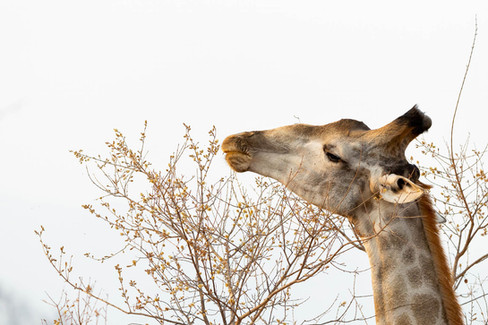










































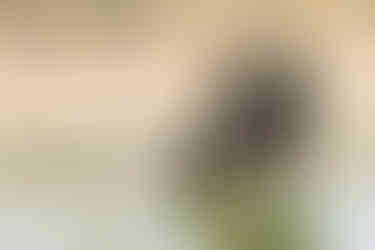











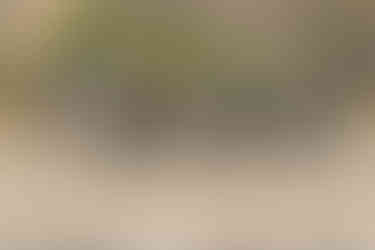
















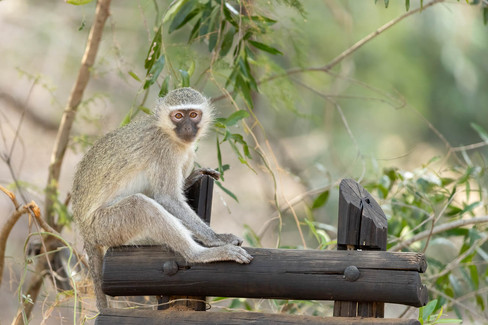
































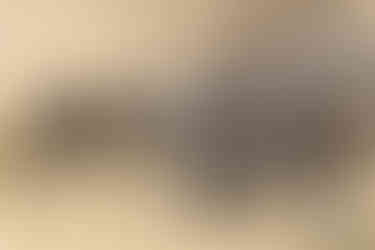





































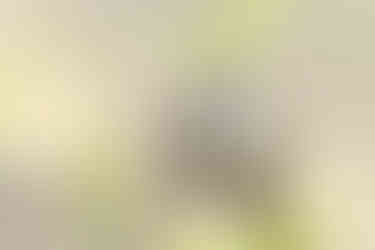









































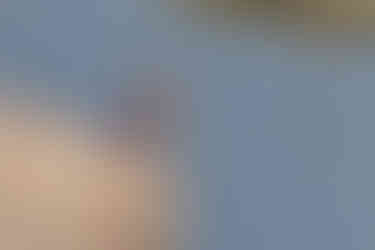




































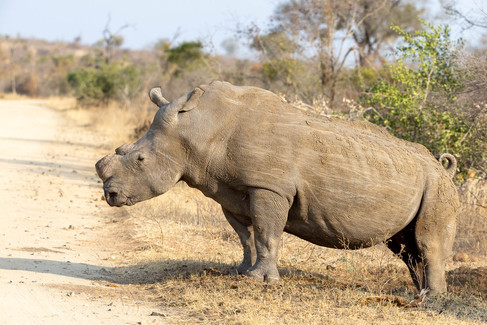



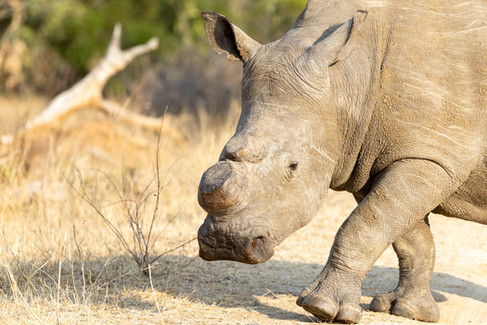





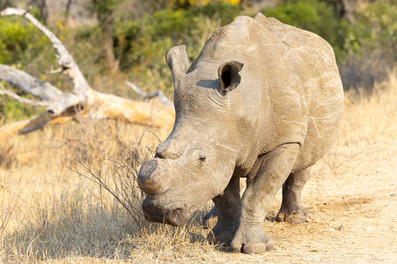
















































































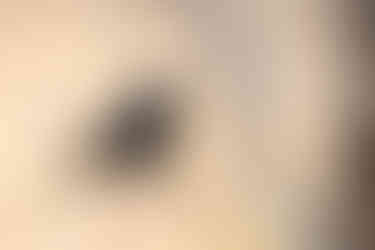














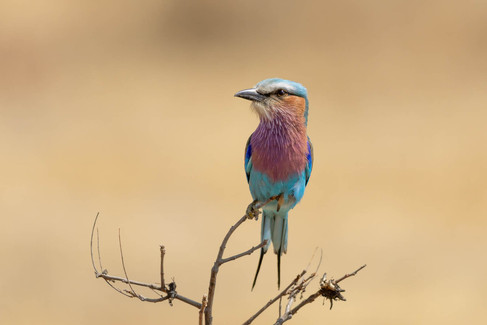









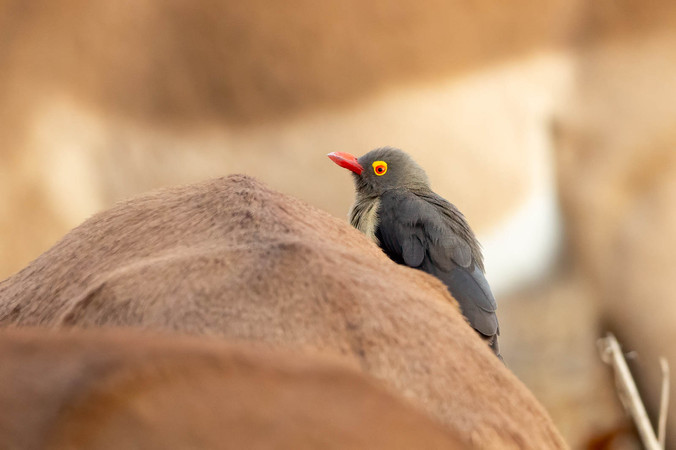






















































































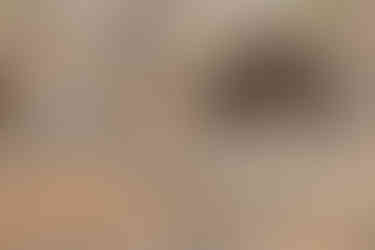

























































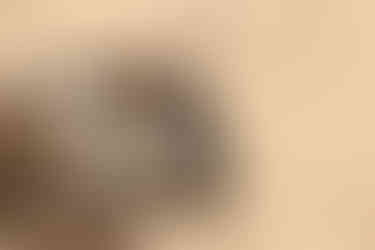

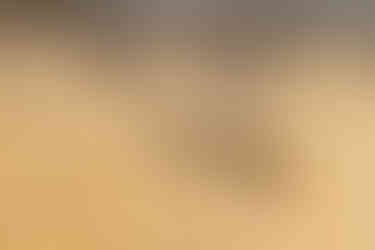




























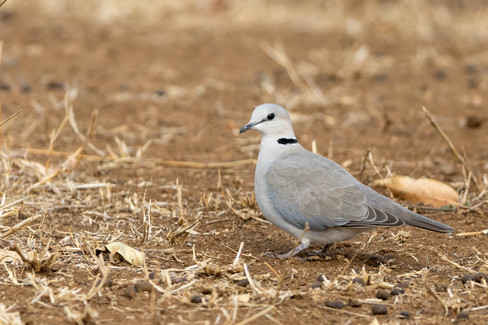

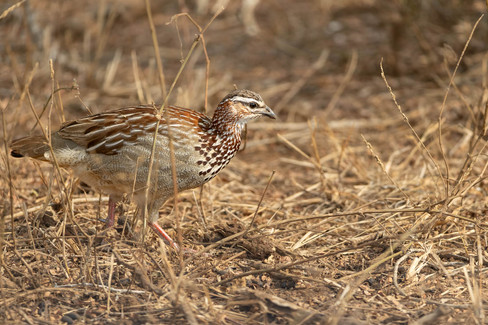


























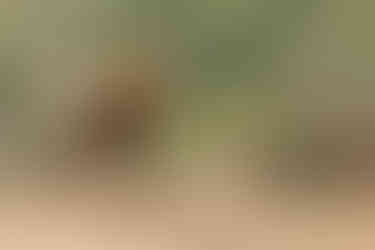



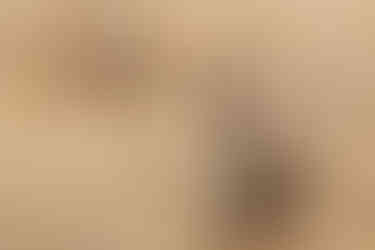











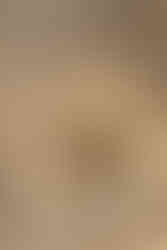








































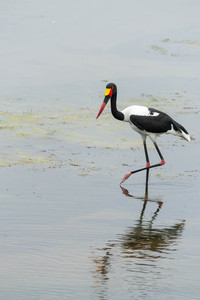








































Comments